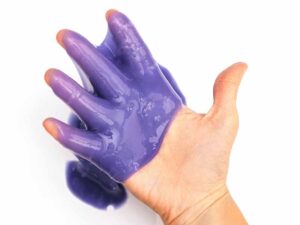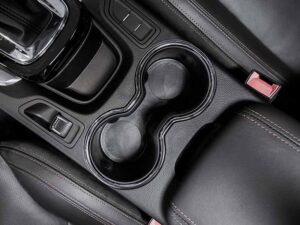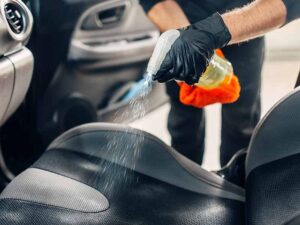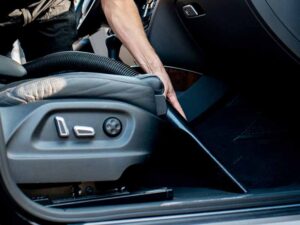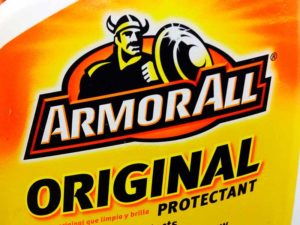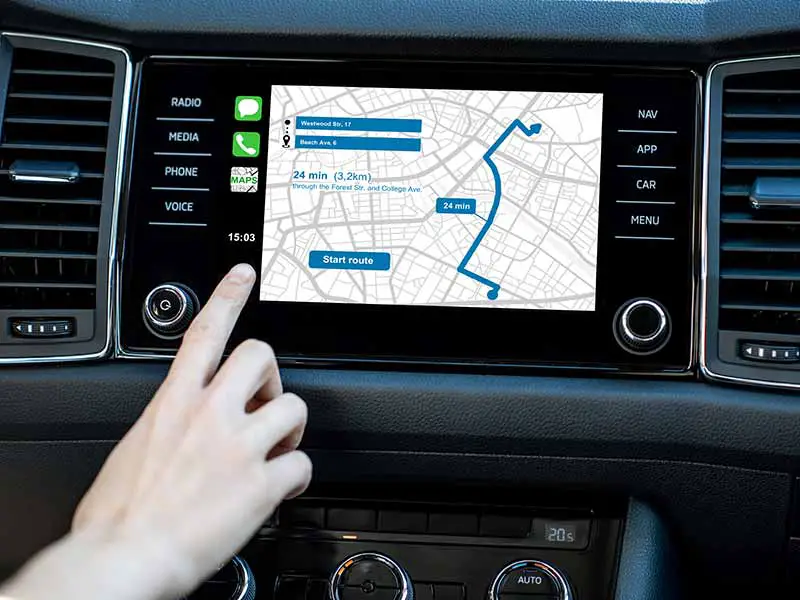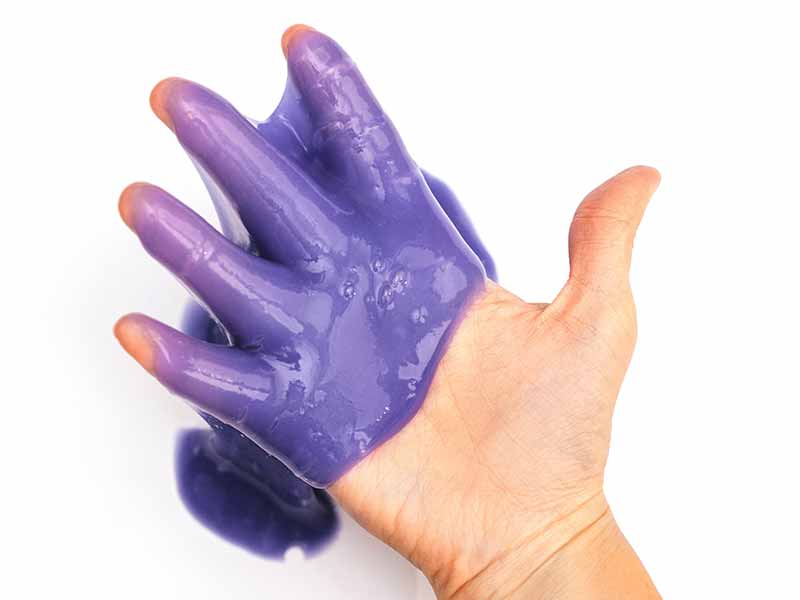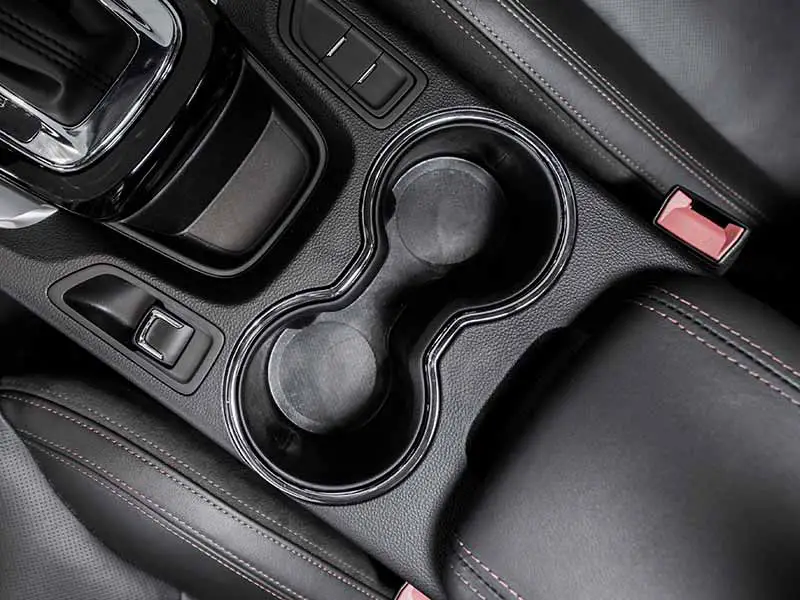A sticky shiny dashboard is the result of car manufacturers reformulating the polymers in their dashboard plastics to be more “green-friendly”.
Unfortunately, these new formulations break down prematurely due to ultraviolet exposure from the sun and heat cycling. This causes what is called “blooming”. Where the broken down polymers inside the dashboard material work their way up to the surface of the dash.
Sometimes this is referred to as a “melting” dashboard which is fairly accurate.
Do this first!
There are a few different methods to restore your dash to like-new condition. Before you try this though it’s recommended you contact your local car dealer for the make of your vehicle and see if they have a recall for this problem. Some manufacturers may replace the dash free of charge.
Unfortunately, you’re not likely to have much luck getting the manufacturer to replace your dashboard. The reason is that the problem usually doesn’t present itself until after your warranty has expired.
Also, this is a very labor-intensive fix which means the manufacturer will need to pay the local service center techs a lot of money to pull and replace a dashboard. If they can get away without fixing it they will.
Most manufacturers or local car dealers will tell you it’s simply not covered or that it was your fault for using an unsafe product on the vinyl or plastics. If you bought your car or truck second-hand it can be impossible to know what was used on the dash to clean and protect it.
Toyota has been known to replace dashboards for some cars and trucks under an extended recall so you may have luck with them. Mazda and Nissan have been less helpful with this problem. While Toyota, Mazda, and Nissan seem to have the largest number of dashboards with this problem, it isn’t isolated to just them. Many other manufacturers are dealing with this problem.
Solvent
Citrol 266
Trim Restorer
Cerakote Trim Coat
Disposable Rags
Scott Shop Towels
Solvent
Trim Restorer
Disposable Rags
Citrol 266
Cerakote Trim Coat
Scott Shop Towels
How do you fix a sticky dashboard?
Let’s go over the high-level steps required to repair your dashboard to like-new condition.
- Protect areas you don’t want to be damaged, such as fabric pillars with painters tape.
- Remove any large bits of dirt and debris stuck to the dashboard.
- Spray a cleaner onto a disposable rag and remove the sticky surface coating on one small section by wiping it away.
- Once you’re satisfied that you’ve cleaned that area well, continue until the entire dashboard is cleaned.
- Use an all-purpose cleaner to remove the residual solvent cleaner
- Protect your cleaned dashboard with a UV protectant to limit or hopefully prevent future damage.
What products you’ll need
- Painter’s Tape
- Disposable Rags
- Solvent Cleaner
- Plastic Trim Restorer
Solvent Cleaner
While I can’t tell you what will work best for your dashboard, I can tell you some of the best options to try. No matter which cleaner you decide to go with it is recommended that you test it on the least conspicuous spot you can find to see how it reacts to polymer formulation of your dashboard.
Bug And Tar Remover
Many people recommend bug and tar removers to clean away the sticky coating on your dashboard. Bug and tar removers are mild solvents that are designed to be safe for car and truck exteriors.
Citrol 266 is a citrus-based powerful degreaser that we’ve found to be far more effective for removing tar and bugs than purpose-designed bug and tar removers. For this reason, we think it’s a better choice for most people to tackle this job.
Adhesive Remover
Goo Gone is a powerful adhesive remover. It can definitely get the job done here. It may be a little aggressive but it is a popular choice of DIYers fixing sticky dashboards.
Solvent Cleaner Alternatives
Some people have had success simply using soap and water. Others have used Oxy-Clean mixed with warm water. These options are obviously a lot less aggressive than using a solvent. If you decide to go this route you’ll need to use a lot more elbow grease and it will likely take a lot more time.
Plastic Trim Restorer
Typically trim restorers are designed to restore UV faded exterior car or truck plastic trim. While they are excellent at bringing back the deep black color of faded exterior plastics, they also provide powerful protection against future UV damage.
Again, like with anything that you’re using that isn’t exactly being used for its intended primary purpose, test it in an inconspicuous spot first to make sure that it reacts well with the unique polymers in your dashboard.
Cerakote Trim Coat
Cerakote Trim Coat is our number one recommendation in the trim restorer category. It’s an extremely durable ceramic coating that will last an extremely long time.
For exterior use, they guarantee 200 washes or 2 years. For interior use which is not frequently rubbed, isn’t exposed to rain, and often has some level of UV protection from UV coatings on the windshield and side windows, it should last significantly longer.
Gtechniq C4
Gtechniq C4 is our runner up trim coat product suggestion. It lasts between 1 and 2 years when used on vehicle exteriors but obviously should last far longer when protected on the inside of the car.
Plastic Trim Restorer Alternatives
You don’t have to use a high-end protective coating. You can regularly apply a typical dashboard protectant like 303 Aerospace Protectant. It’s our recommended interior protectant for its excellent UV protection and matte finish. It won’t last as long as a trim restorer but it can achieve the same goal if applied to the surface of your cleaned dashboard regularly.
Helpful Links
Conclusion
If you’re someone that has found your dashboard is sticky, check with your local dealer first. Sticky dashboards might be covered under a recall or if you happen to still be under warranty, it should be replaced.
Heat cycling and ultraviolet damage can cause the surface of your dashboard to become shiny over time. Eventually, it can become very sticky.
Heat and UV can not only make a dashboard sticky but also make it very shiny. A shiny dashboard surface can produce a harsh glare in bright sunlight. This is obviously very dangerous.
Hopefully, the information in this article will help you repair your dashboard and remove the sticky and shiny goop that has bubbled up from the plastics and polymers within.
If you properly protect your dash you should be able to keep it protected from heat and sun damage and hopefully keep the dash surface from becoming a shiny sticky mess again.




